The Gift of Perspective : A Conversation with Matthew Offenbacher & Jennifer Nemhauser
When we received an email announcing Deed of Gift, a collaborative art piece by Matthew Offenbacher and Jennifer Nemhauser, we immediately asked them to share with us the story and their perspective of this unique project. It was so moving to us, the way this work is simultaneously an act of subversion, humility, generosity, and kindness. This work moves us and makes us grateful. So thank you, thank you, thank you to Matt and Jennifer for the growth you are creating in this community. We’ll let you take it from here.
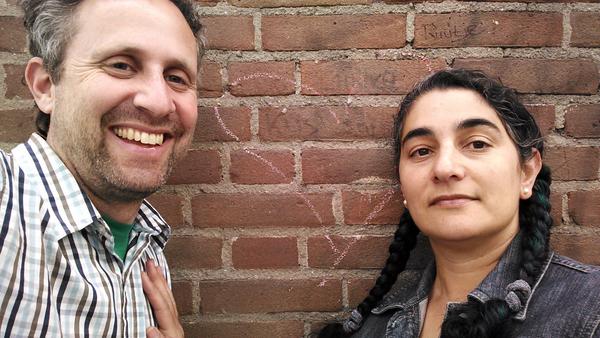
Matthew Offenbacher and Jennifer Nemhauser
Jennifer Nemhauser: Maybe we should start by describing our project.
Matthew Offenbacher: Right! It’s an art project called Deed of Gift. We took around $20,000 of a generous art award I won two years ago [the Neddy at Cornish], and used it to buy a collection of artwork to give to the Seattle Art Museum for their permanent collection. It’s the first time we’ve “officially” collaborated, even though we’ve been partners for 25 years, and we talk through work things with each other all the time.
J: The artists are Daft Kuntz (which is a collaboration between Dawn Cerny and Victoria Haven), Anne Focke, Klara Glosova, Wynne Greenwood, Ann Leda Shapiro and Joey Veltkamp.
M: We worked closely with SAM curators to finds points of common interest to shape this list. It was a long process of conversation that resulted in the work that we bought and SAM took. I’m very proud of the artists and work we came up with. The artists all live in the Seattle area—
J: Do you want to explain why that is significant?
M: I think there’s some aspect of this work that’s arguing for why a kind of “regionalism” makes sense right now—a focus on the specialness of art and the history of art from the perspective of this place. I don’t mean in a folksy kind of way, separate from what’s happening globally, but in the sense that a commitment to our region is a commitment to understanding the world. Like, you know, that Matthew Stadler essay I love so much? Let me find a quote: “The institution and the city are at the center of a connected, dynamic globe, always—never a remote or special space awaiting the arrival of art and insight from distant capitals, always the center of a global discourse that returns and returns, as blood through a heart.”
J: Nice.
M: The other thing I wanted to point out is that all the works have feminist and queer themes.
J: We are such children of the 70s!
M: That’s when Ann Leda made her two paintings! Kissing hermaphroditic mer-people and astronauts. So amazing. The astronaut one has little airplanes skywriting “one needs a cock to get by”.
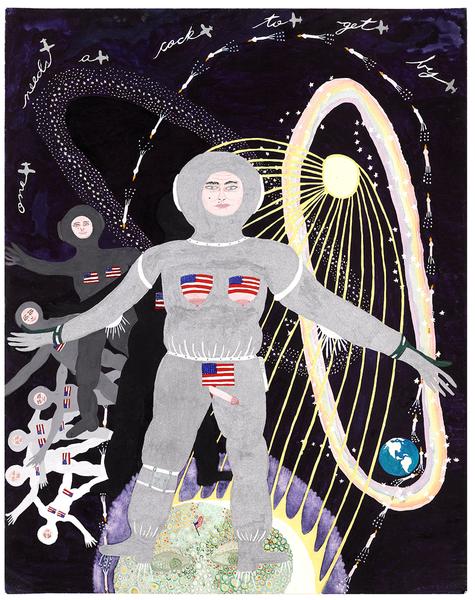
Ann Leda Shapiro, Women Landing on Man in the Moon, 1971, watercolor on paper
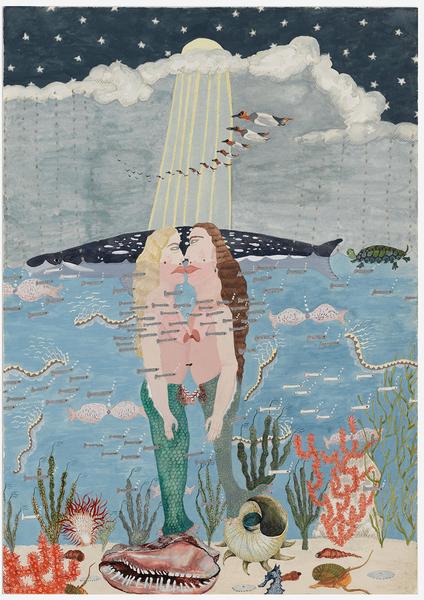
J: I love that Ann Leda’s paintings have a history with the Whitney [Two Sides of Self was censored from a show at the Whitney in 1973, and Women Landing on Man in the Moon was made in response], and the Daft Kuntz print has a connection with SAM. As I understand it, “So good it could have been made by a man” was something Vic overheard at the opening of her show at SAM, at the time of the Elles show two years ago. Just goes to show: the more things change….
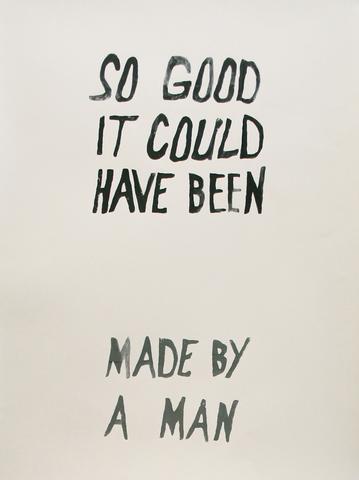
Daft Kuntz (Dawn Cerny and Victoria Haven), So Good It Could Have Been, 2012, silkscreen on paper
M: I like how we ended-up with a group of artists who all do things in our community—as organizers, teachers, activists, community leaders. I’m interested in how this plays out in their work. For example, I think Joey has taken up a form of art that’s associated with family and community and turned it kind-of inside-out—so that the public spaces his quilts end up in are somehow transformed into communal spaces, spaces of shared experience.
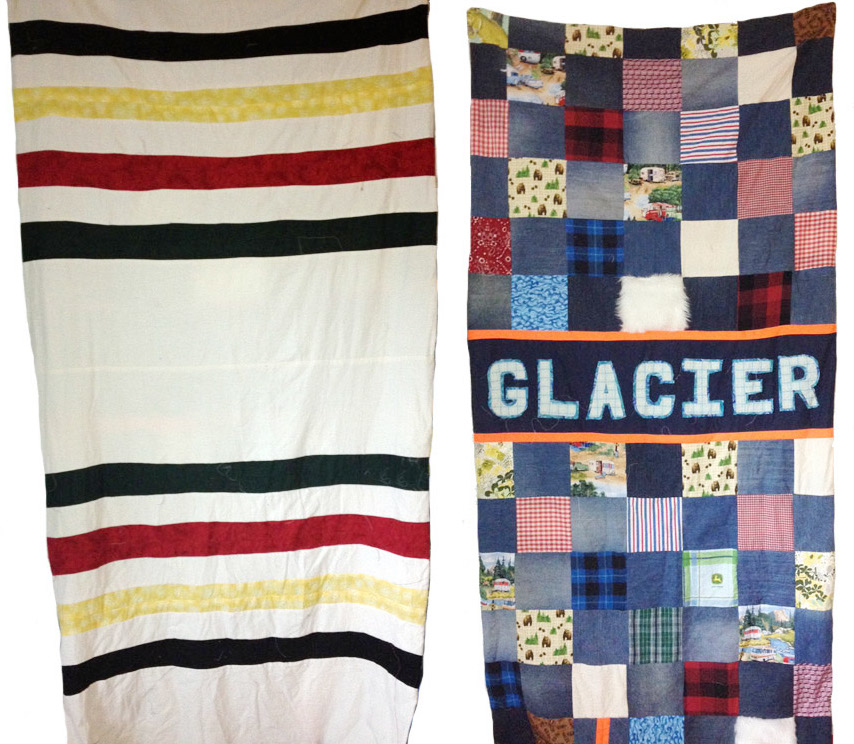
Joey Veltkamp, A-side: G L A C I E R / B-side: Glacier National Park (Pendleton Park Series), 2013, fabric, batting, thread
J: That seems like the opposite mood from Klara’s paintings, where people are in a community, but still feel so isolated.
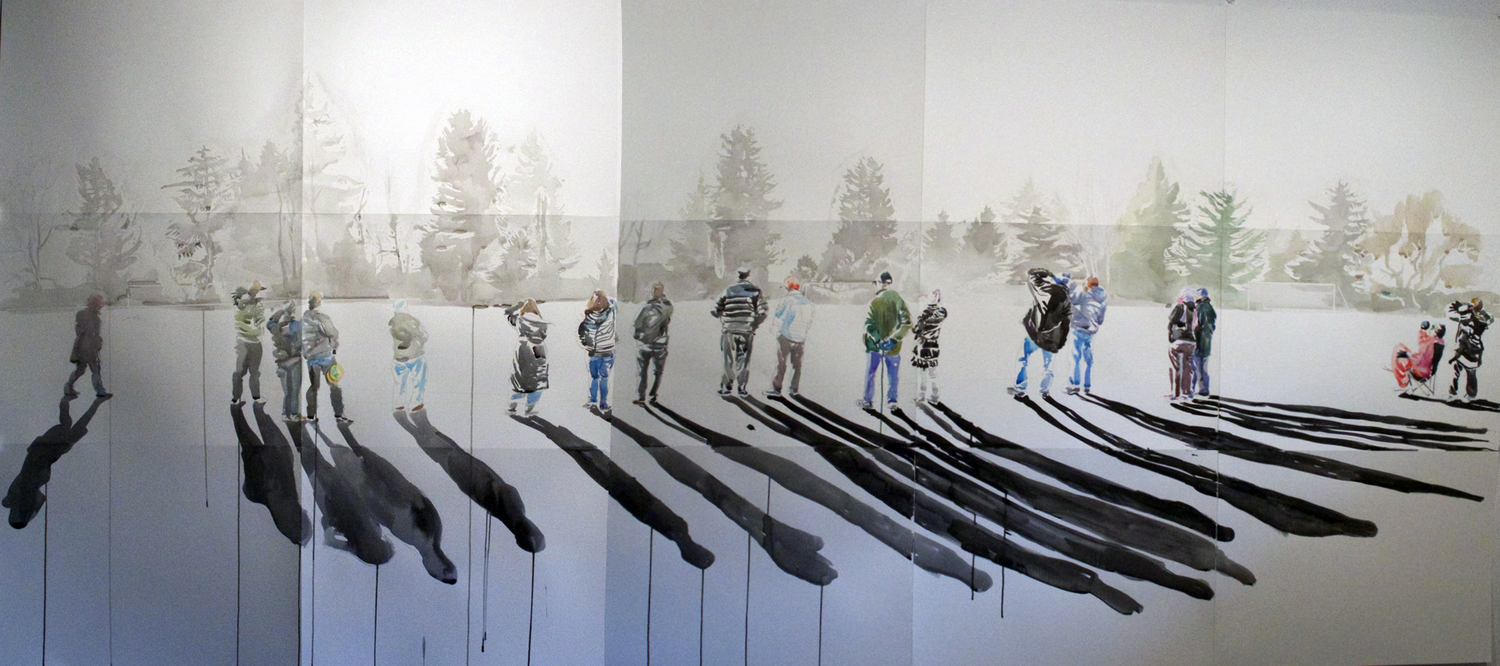
Klara Glosova, Life on the Sidelines, 2014, watercolor on paper
M: Yeah, that mood of alienation is strong. What about Wynne’s video? Young Women Warrior Prepared for Battle. Community or alienation?
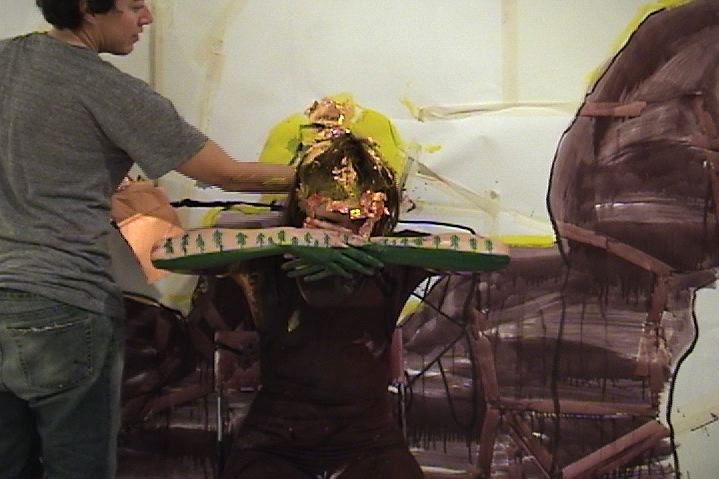
Wynne Greenwood, YOUNG WOMAN WARRIOR PREPARED FOR BATTLE, 2007, single channel DVD
J: Way to put me on the spot! I think the video, like so much of Wynne’s work, is about finding a way through. Hopefully taking advantage of having a community, but also knowing that, ultimately, we are kind of on our own. It’s inspiring and somehow reassuring that it is kind of a mess for everybody, because that video is so messy.
M: For me, it’s also something about power, the power to quite literally paint your own world—but also how fucked-up that can be. That’s kind of the theme of Anne F.’s book too.
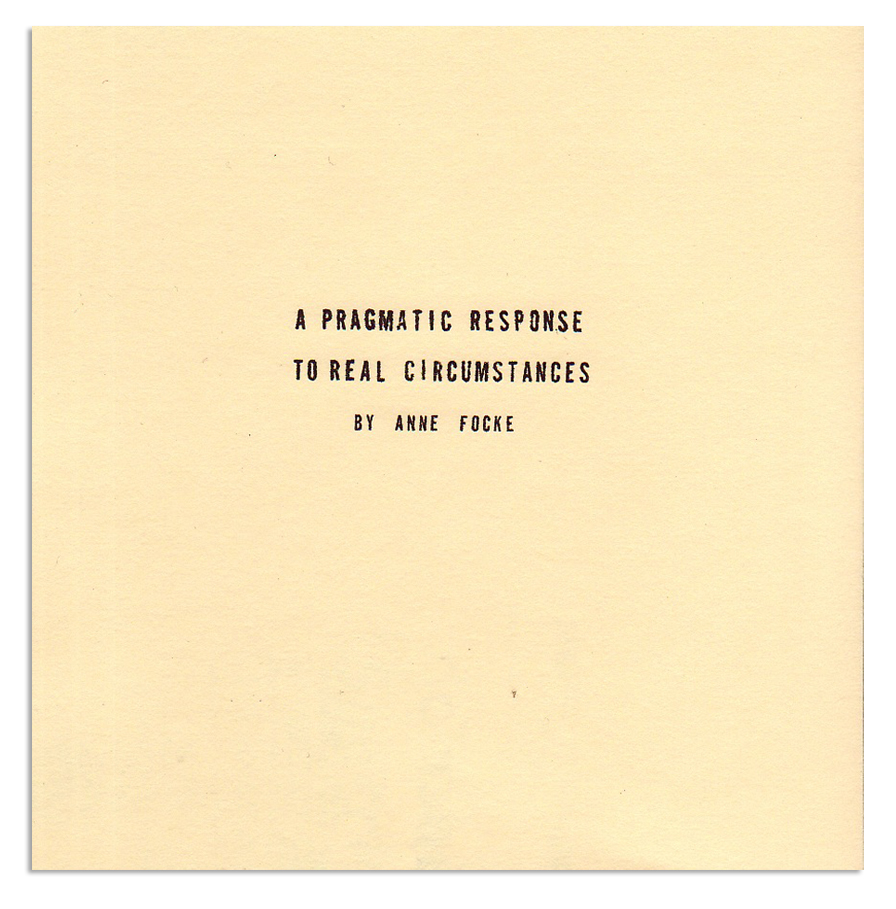
Anne Focke, a pragmatic response to real circumstances, 2006, softcover book
J: A pragmatic response to real circumstances—the title kind of says of it all.
M: We should also talk about how many other collections we could have put together in place of this one.
J: Yes. I can say with no hesitation that we could have made a collection of equal quality twenty times over. It would be ridiculously easy to assemble a similarly awesome collection of work by completely different people—not even counting other pieces by these same people. And think of all of the themes we didn’t even touch with this work. Like all that great stuff about loving the monsters we are, scorned for timber, gnarly decomposition as reclaiming that you wrote about in “Green Gothic”.
M: If anyone wants to give us another $20,000 we’re happy to assemble a different awesome collection.
J: Or maybe lots of other people will decide to make their own collections. A big theme of Deed of Gift is that there could be many more people collecting “museum quality” art right here in River City [Jennifer starts singing songs from The Music Man]. We’ve talked a lot about how some people don’t hesitate to spend $1000 on a sofa, but would feel completely decadent spending $1000 on a piece of art.
M: Yeah, why is that?
J: I think it’s something about people not trusting themselves to make good decisions about art. Maybe also because they are objects and people feel like it’s a big commitment. It seems easier to spend money on transient experiences—like dinner out or vacation, or even a concert. I think it would be awesome if more people could feel like it was okay to buy a piece of art, live with it for a few years, and then let it circulate again if they’ve moved on. Or start giving art as gifts—how fun is it to tell someone that you will buy them a piece of art that you pick out together?
M: That would be awesome. You could totally spend a few hundred bucks on something, enjoy having it, it’s not such a big deal. Not thinking “is this a good investment?” or “will I want this in 10 years?” —but more like, “this thing is speaking to me right now and I want to invite it home.”
J: Like in the Sea-Cat video?
M: Yeah! Let’s put a link to it, it’s classic. Collective art collecting!
J: I love the idea that when you buy art from a local artist you are investing in our overall quality of life. It’s kind of like a public radio fundraiser—you can listen for free, but you feel so much better when you make a donation. The tote-bag or whatever is just a bonus.
M: In making Deed of Gift we had a lot of questions about how artists are supported, and how a big part of that support is people who buy art.
J: We’ve talked about it in terms of the metaphor of an ecosystem. Especially in a city that’s changing as fast as Seattle is, you really see the potential for a whole segment of the population to go extinct.
M: I think there’s this misconception of what artists are contributing. Many people seem to have the impression that artists are small-scale business people, producers of things whose value should be judged by the market-share they attract.
J: Totally. When we got a chance to live in Rotterdam for three months last year for your residency, it was a completely different vibe. Artists still saw the importance of circulating work through a market, but there was a strong sense in society of having artists integrated in every community. It was part of a good quality of life, like really great bike paths. It also seemed something baked-in to the education system. It made everyone feel like everyone had something to say about art. It didn’t feel like it was such a precious, elitist activity.
M: One result is that the artists we lived with there seemed so much less stressed out!
J: Yeah. So definitely, getting money directly to more artists, taking award money and distributing to more artists in the community felt great. Getting work into SAM—underlining the idea that museums also have a critical role in the local art ecosystem—also super important. I think like a lot of people, I have a love/hate relationship with Seattle. This project was definitely a way to focus on the love part.
Back to Articles
